Using Target Account Selling to Increase Your Deals
Casey O'Connor
Target account selling — sometimes known as account-based selling or account-based marketing (ABM) — is a sales approach that prioritizes personalized sales resources for a specific subset of highly qualified, best-fit leads.
This sales methodology requires reps to deliver a customized marketing and sales plan that’s tailored to each individual target account.
In this article, we’ll go over the basics of target account selling and what makes it so lucrative for certain companies, as well as a couple of examples in practice.
Here’s what we’ll cover:
- What Is Target Account Selling?
- The Target Account Selling Methodology
- Examples of Target Account Selling
- TAS Training for Your Sales Team
- Why Target Account Selling Will Increase Your Deals
What Is Target Account Selling?
Target account selling (TAS) is a B2B sales approach that focuses on creating customized, nurturing, customer-centric relationships with multiple decision-makers within highly qualified “target” businesses.
The Target Account Selling Methodology
The idea behind TAS is to build a very specific, highly targeted list of potential customers that will ultimately receive personalized support throughout the buying process. The goal is to personalize and maximize the resources being poured into well-qualified, high-value accounts.
TAS requires solid alignment and cooperation between the marketing, sales, and customer success teams. The three teams collaborate throughout a basic three-step TAS approach:
1. Marketing and sales teams work together to determine a list of general characteristics of best-fit customers, called the Ideal Customer Profile (more on this in a minute). Sales reps only target businesses (we’ll call these businesses “accounts” from here on out) that fit the ICP.
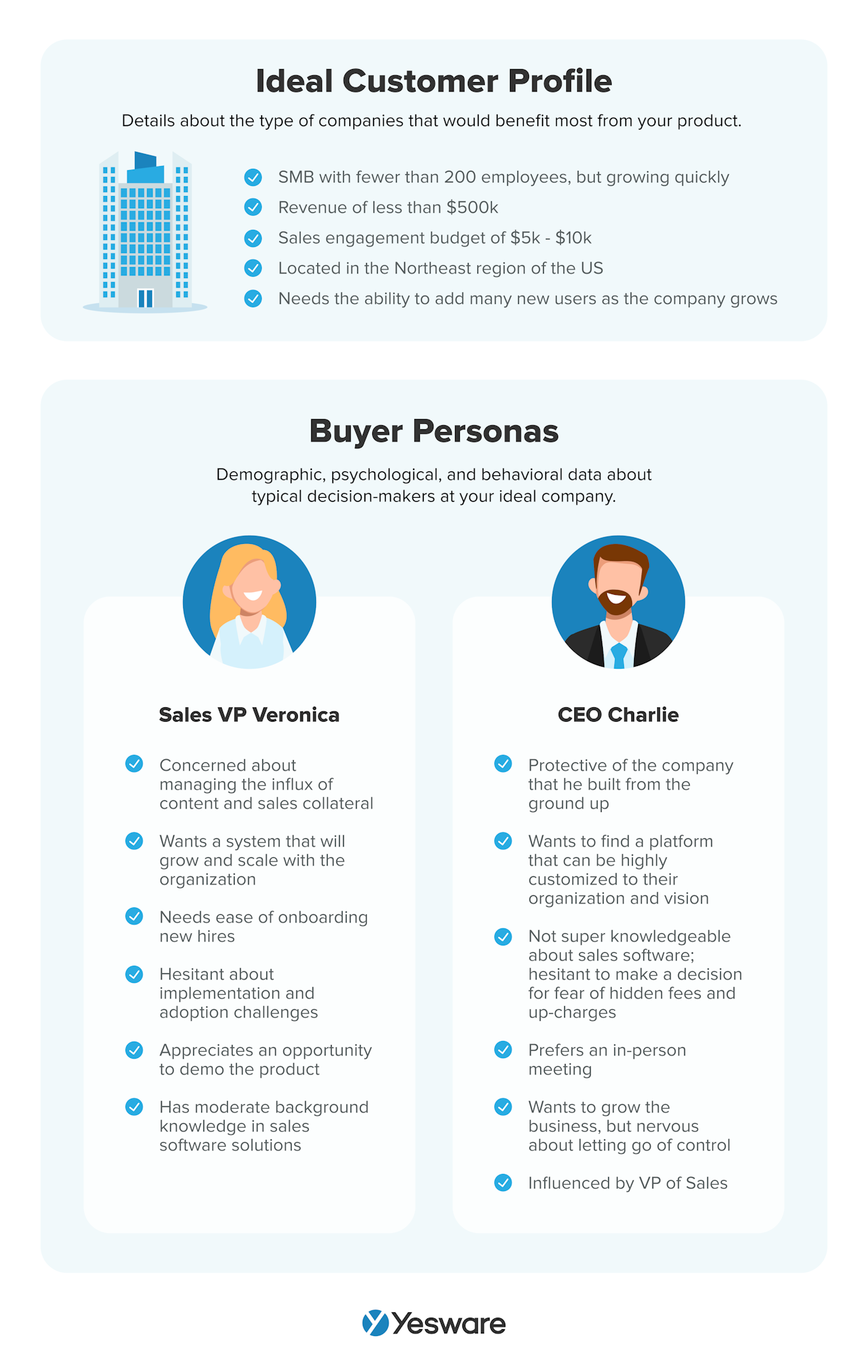 Unlike inbound marketing, which places a heavy emphasis on the quantity of leads, target account selling emphasizes ensuring that all target accounts that move through to the contacting stage are thoroughly researched and are already a definitively good fit. In other words, lead quality is much more important than lead quantity.
Unlike inbound marketing, which places a heavy emphasis on the quantity of leads, target account selling emphasizes ensuring that all target accounts that move through to the contacting stage are thoroughly researched and are already a definitively good fit. In other words, lead quality is much more important than lead quantity.
2. Once the sales and marketing teams develop a clear Ideal Customer Profile, the sales team continues researching each well-qualified account. This research helps them develop unique buyer personas for each individual decision-maker in each specific target account.
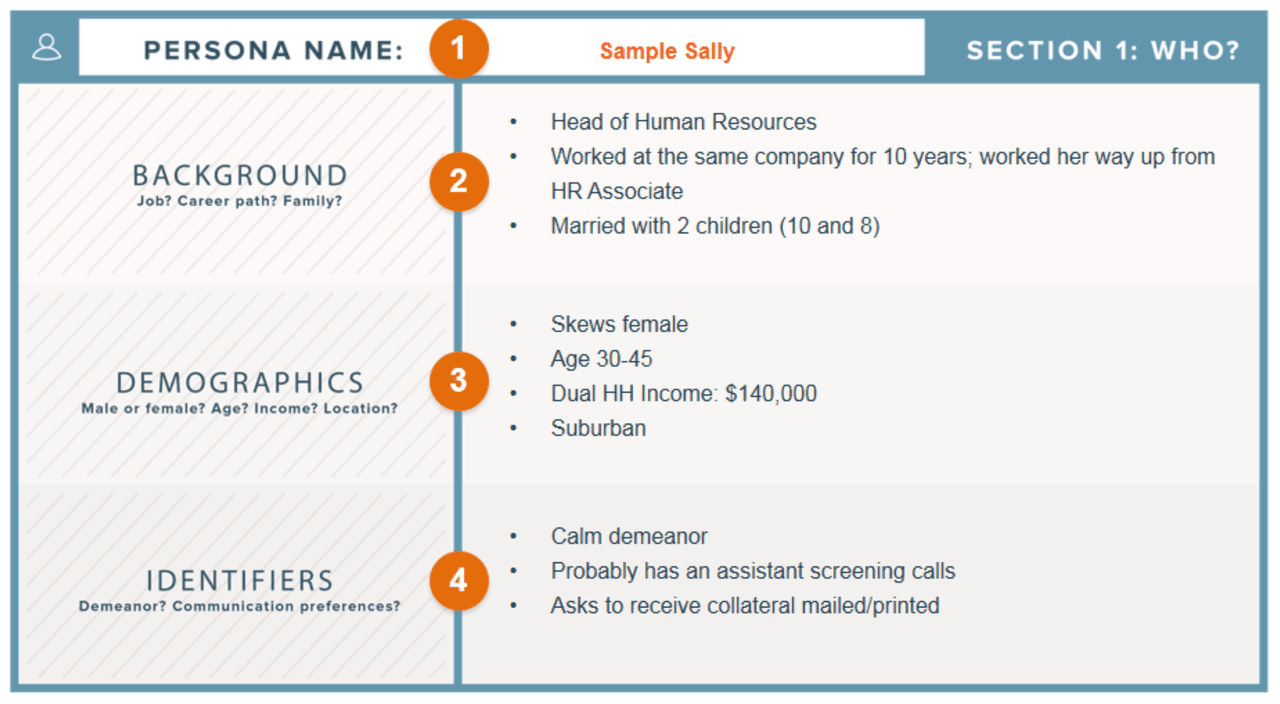
Notice the way the buyer persona is even more specific than the ICP. This personalization allows sales reps to customize their content and nurture each lead through the buying process in a way that addresses their needs and resolves their unique pain points.
3. Sales and marketing teams continue to nurture each stakeholder through the sales funnel and buying process until close. Both teams then stay in close communication with the customer success team, who can offer back valuable insight into a customer experience that can be used for further target accounts.
Target Account Selling Strategy
Target account selling is a really competitive strategy for B2B sales teams that sell to enterprise clients with many stakeholders and decision-makers.
It’s also very effective for subscription-based products, those with tiered pricing plans, or ones with ample opportunities for cross-selling and upselling. It’s also one of the most successful ways to approach big-ticket deals.
The TAS approach requires diligent research, and the process can seem time-consuming. But, for the right accounts, this is time well-spent. The process also gets easier and more efficient over time as you become more and more familiar with your ICP target accounts. Focus your efforts on the following research campaigns as you build a list of target accounts.
Primary Research
Your primary research will form the basis of your Ideal Customer Profile. Start by looking at the similarities between your current, most successful accounts. Noticing common threads will help you build out some of the demographics of your target market.
Your initial research will also give you insight into the kind of content that’s most valuable to your ideal customer. As you move each target account through the sales process, you’ll want to continue tailoring and customizing content based on each decision-maker’s buyer persona. But having a general overview of the value your customer responds to can give you a great jumping-off point.
An Ideal Customer Profile should include basic firmographic information, such as:
- Industry
- Number of employees
- Annual revenue
- Budget
- Size of customer base
- Age of business
Your marketing team will be a huge asset in this process; they can help you identify which kind of buyer resonates the most with your current marketing content. Ultimately, the ICP should be general enough that it doesn’t exclude any segments of your market, but also specific enough that the characteristics feel “targeted” and not a free-for-all lead generation list.
Account Intelligence
Once your sales professionals and marketing team align to create the ICP, it’s time to start targeting individual accounts.
Start by generating a list of companies that fit your ICP. From there, it’s time to dive into the details. Learn as much as you can about each of these key accounts. If you’re not sure where to start, try LinkedIn — it’s a goldmine of information about company structure, decision-maker data, and current company happenings.
There are also a number of software platforms that can help you gather technographic and behavioral data from your target account contacts. Look specifically for buying signals, pain points, or insights into the solutions they’re currently using to meet their needs.
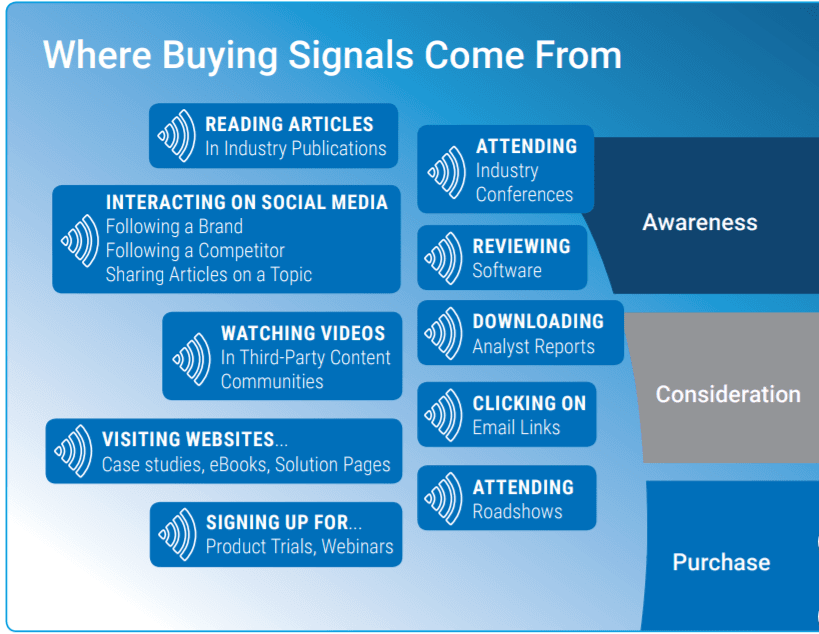
The more specific, the better — this data is what will drive your sales strategies, content creation, and rapport-building decisions from here on out.
Competitor Intelligence
Knowing your company’s USP and being familiar with your customer’s pain points are only two pieces of the TAS puzzle. Your salesforce also needs to be up-to-speed with your competitor’s offerings in order to really set yourself apart.
This is another area in which LinkedIn can help; check out how your competition interacts on social media and through other marketing campaigns. Study their weaknesses and capitalize on them. There are lots of publicly available data to inform your intelligence here, as well as software tools to speed up and enhance the process.
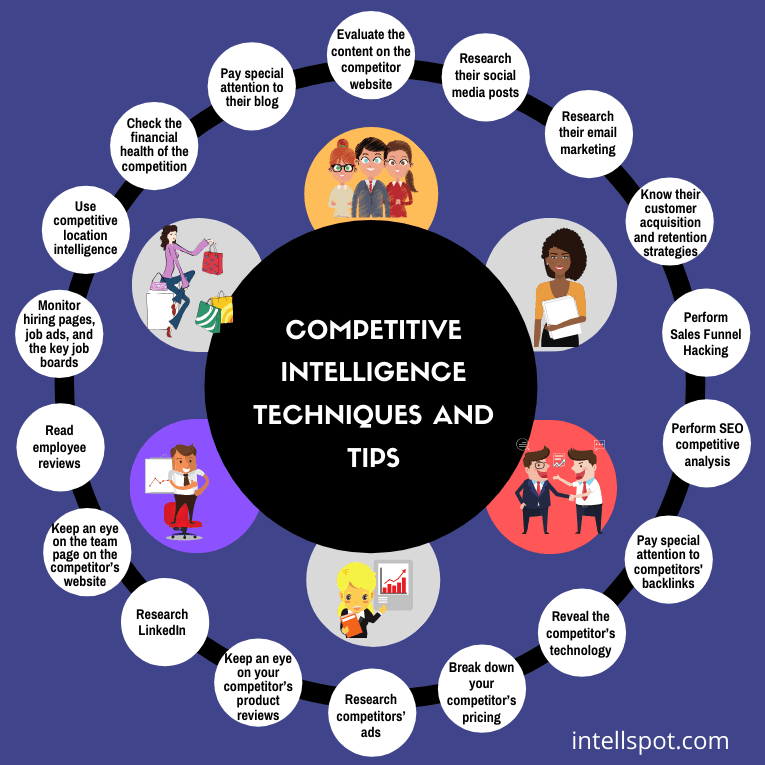
Once you gather ample insight into your competition’s offerings, consider making battle cards for each main competitor. A battle card is like a one-page cheat sheet that hits the major demographics, strengths, and weaknesses of your competitors. 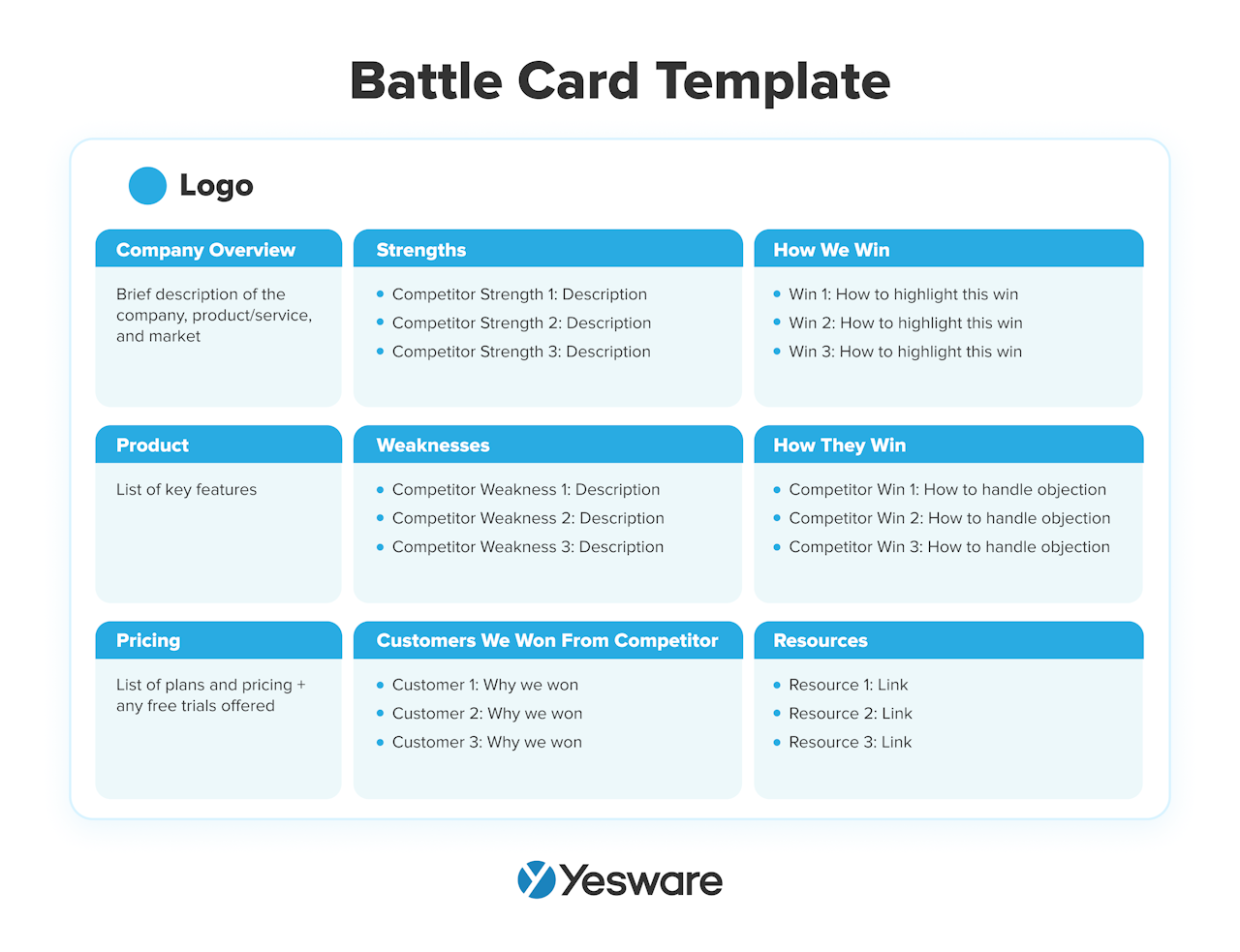 You won’t use these battle cards directly in conversation with potential customers, but they will be helpful in building your sales campaign, preparing your pitch, and overcoming objections.
You won’t use these battle cards directly in conversation with potential customers, but they will be helpful in building your sales campaign, preparing your pitch, and overcoming objections.
Market Intelligence
Many sales professionals conflate market intelligence with competitor intelligence, but there are some subtle differences here to be aware of.
Once you’ve nailed down your competitor profiles, you’ll also want to zoom out and take the pulse on your market as a whole. That includes competitors, but market intelligence also takes into account things like the overall economy, pricing trends, and any advancements or disruptions in your market on both the seller and consumer side.
This kind of analysis will help you further determine which accounts present opportunities for future growth, and which may be phased out of qualification in the near future.
Account Selection
Ultimately, the goal of all of this research and analysis is to create a narrow list of target accounts to approach with the intention of beginning the sales process. You’re aiming for optimal account coverage here — you want a high level of engagement from a good handful of key accounts.
Note that there’s a balance to be struck with account coverage — too many accounts might leave fewer resources for personalized support through the buyer’s journey. Too much engagement with too few accounts could limit your overall potential.
With that in mind, consider each target account against a number of factors. How likely are they to buy from you? How many resources will they require to get to that point? WIll the lifetime value of the account make those resources worth it?
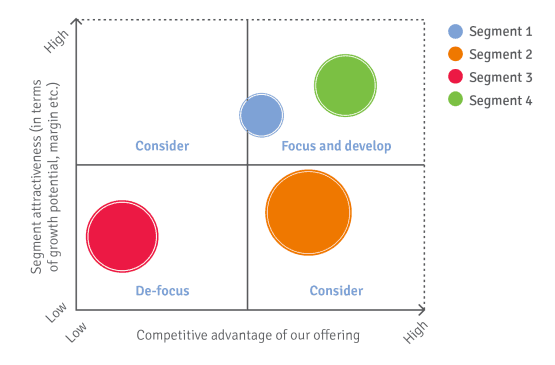
Many companies develop their own scoring system to determine which accounts will be assigned to a rep. Others rely on sales reps’ subjective opinions.
Regardless of your decision-making strategy, remember that account quality is the most important factor when deciding which will get the attention of a salesperson.
Examples of Target Account Selling
Here are a few examples of target account selling in action.
Software
Your B2B company sells accounting software. In building your ICP, you discover a potential customer for whom your product is a fantastic fit.
Instead of finding the first point of contact available on the website and firing off your standard introductory email, you first spend time researching through LinkedIn about their company structure. Your research helps you develop buyer personas for a number of key decision-makers, which helps you design your messaging and outreach approach.
HR Manager:
You write a personalized letter to the HR manager, who you know is responsible for itemizing expenses and payroll details. You highlight the ease of automation on your platform, along with the fact that each individual employee will have the ability to enter their own expenses. This meets this particular stakeholder’s needs to a tee — it frees up some of his menial data-entry workloads and distributes the accountability a bit more evenly.
Sales Manager:
In this outreach effort, you choose to focus on the fact that your software is capable of accounting for up to 30 different compensation plans. This is a huge relief to the sales manager, who’s responsible for allocating the commission payments for reps on several different commission structures.
CFO:
You know from your research that this CFO values products that are graphically outstanding. Image matters to her. In your introductory email, you include a few PDFs of the many different high-level graphs and charts that your software is capable of producing. You also know that none of your competitors offer the ability to toggle and compare between different graphics, so you make sure to highlight that feature, as well.
This is one example of targeted account selling. The outreach is personalized and highly specific to the customers’ needs. When the decision-makers come together to discuss your proposal, they will each have a positive to bring to the table.
Manufacturing-Related
Many manufacturing companies rely heavily on trade shows for new business. But connecting with the ideal customer in a sea of anonymous convention attendees can feel like finding a needle in a haystack.
Using a TAS approach, a sales manager preparing for a trade show might contact the administrator of the convention and ask for a contact list of attendees. From there, the research process can begin. The sales team spends weeks in advance researching the attendees and comparing them against their ICP.
Once they’ve compiled a list of target accounts that match their ICP, they begin their marketing campaign. They may create ads directed at specific ICP needs, or they may send a personalized invitation email with a picture of the rep who will be in attendance. A short demo video of their product could also be appropriate.
After the fact, the sales rep might choose to follow up with a (personalized, of course) letter or email that outlines the next steps, as well as any features that represent a good fit after learning more about the customer during the trade show.
TAS Training for Your Sales Team
Targeted account selling requires company-wide buy-in, so it’s crucial to make sure all departments at your company are on the same page before attempting this sales strategy.
If you decide to shift to a TAS approach, keep the following ideas in mind as you train your team.
1. Account Coverage & Account Quality
Remember, there is a fine but distinct line between generating an appropriate volume of opportunities versus generating the right ones. TAS is all about pouring your top-tier resources into your top-tier opportunities, so the research stage is of utmost importance.
2. Tiered Accounts
One strategy for prioritizing targeted accounts is to categorize them into tiers. Some accounts may be eager to buy right away, and some may need more nurturing. Work together with your marketing team to determine which accounts are worth the effort now, and which may be okay with a slower approach.
3. Lifetime Value
One last tip — when considering whether to tier your target accounts, also keep in mind each account’s lifetime value. While some accounts may be eager to buy right away, they may not represent as lucrative of an overall opportunity as another, less-ready-to-buy account.
Weigh the timeline versus profit potential. Bigger profit doesn’t always mean first priority, but it should be taken into account.
Why Target Account Selling Will Increase Your Deals
Target account selling is becoming more and more popular among B2B salespeople, and for good reason — this sales technique can make a dramatic impact on your bottom line. Nearly 85% of marketers report that TAS strategies produce a better ROI than any other sales approach. Here’s why it’s a great skill to add to your team’s sales playbook.
Build Stronger Relationships
When push comes to shove, people make buying decisions based on who they trust the most. This is great news for target account sellers — the TAS approach is based almost entirely on building trust with potential clients via custom content and support.
When you deliver this kind of personalized outreach, it gives decision-makers confidence that you are ready and willing to help them solve their problems and drive their business forward.
Unexpected Efficiency
Although target account selling requires a good bit of research upfront. It actually shortens the sales cycle for B2B companies who sell enterprise or have otherwise long or complicated funnels. That’s because less time is wasted on prospecting non-qualified leads, and the majority of the teams’ resources are directed towards accounts that are virtually guaranteed to be successful and profitable.
Market Penetration
For most B2B companies, their total addressable market is finite. There are only so many companies that can benefit from any given product. Target account selling allows companies to capture a larger percentage of market share than other lead generation strategies. This is because it hones in on only the most qualified leads, and targets them with irresistible-to-them marketing and sales techniques.
It’s no secret that the sales landscape continues to evolve at a rapid pace.
The advance of technology has made acquiring demographic, firmographic, and technographic data easier than ever. At the same time, buyers are starting to expect a more customized sales experience if they’re going to shell out the big bucks. Target account selling leverages both of those scenarios to create a valuable and transformative sales technique that has the potential to dramatically boost your bottom line.
Get sales tips and strategies delivered straight to your inbox.
Yesware will help you generate more sales right from your inbox. Try our Outlook add-on or Gmail Chrome extension for free, forever!
Related Articles
Melissa Williams
Melissa Williams
Casey O'Connor
Sales, deal management, and communication tips for your inbox

